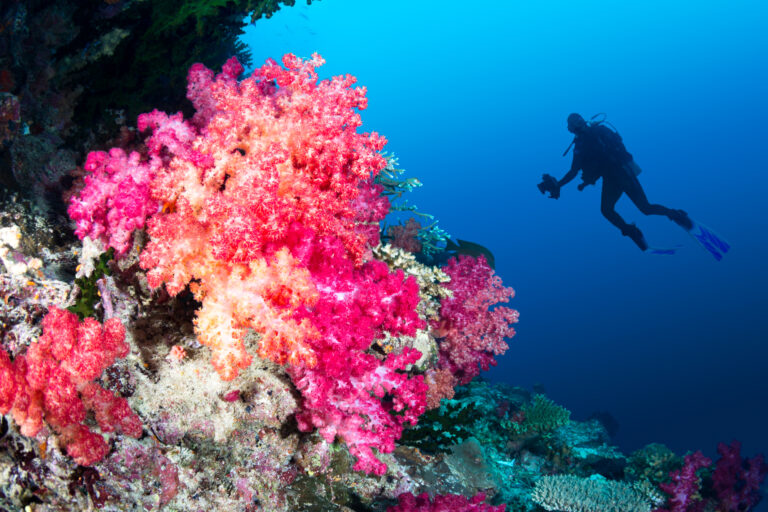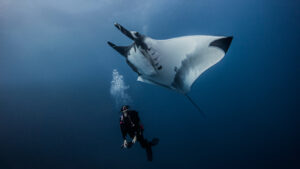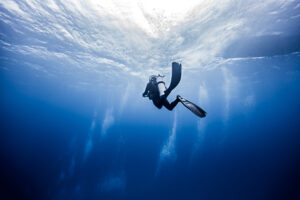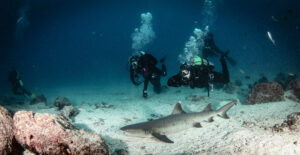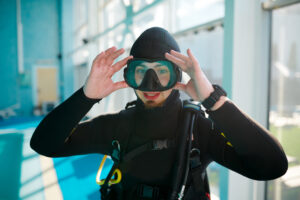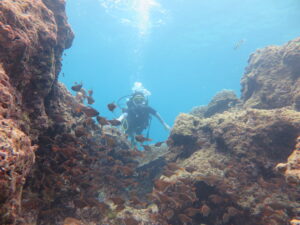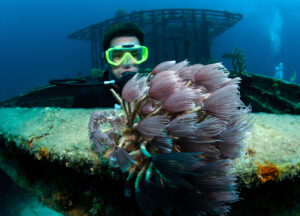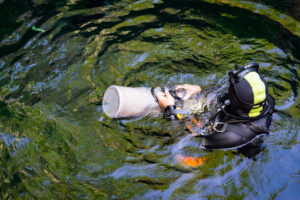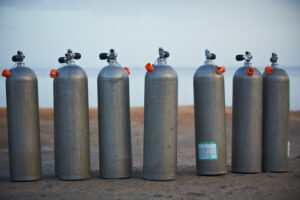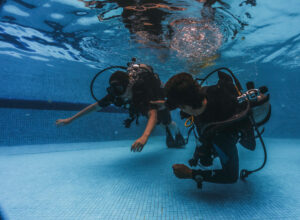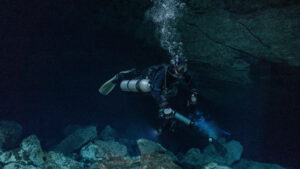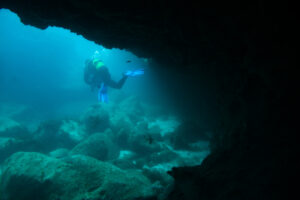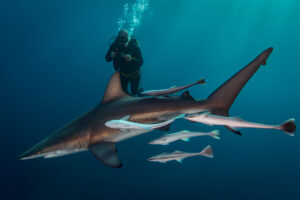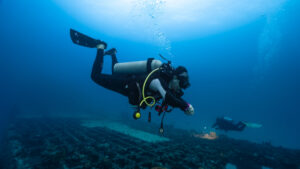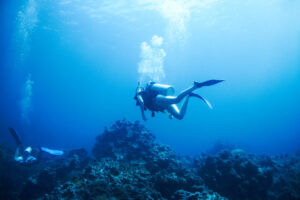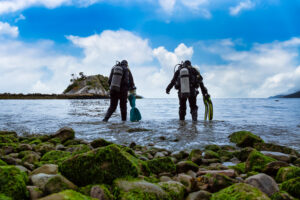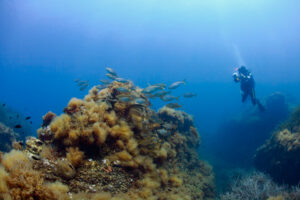What is Command Signals?
Command signals are an essential aspect of scuba diving, ensuring effective communication and safety among divers. These signals allow divers to convey critical information without relying on verbal communication, which is impossible underwater due to the limitations of speaking and hearing in such an environment. As diving gained popularity and became more organized, the development and standardization of command signals became crucial for coordinating movements, sharing information, and handling emergencies.
Definition and Purpose of Command Signals
Command signals in scuba diving refer to a set of non-verbal communication methods used by divers to convey messages to one another. These signals include hand gestures, light flashes, rope tugs, and other physical cues that can be easily understood underwater. The primary purpose of these signals is to ensure the safety of divers by enabling clear and concise communication when verbal communication is not feasible.
Safety is the foremost reason for using command signals. Divers often encounter situations where immediate communication is necessary to address potential hazards, such as equipment malfunctions, changes in dive plans, or emergency situations. By using standardized signals, divers can quickly and effectively communicate their needs and intentions, reducing the risk of misunderstandings that could lead to accidents.
In addition to safety, command signals facilitate navigation and interaction among divers. For instance, when exploring underwater environments, divers use signals to indicate directions, point out interesting features, or communicate their status and intentions. These signals help maintain group cohesion, ensuring that divers stay together and are aware of each other’s actions and conditions.
Types of Command Signals
Command signals in scuba diving can be categorized into various types, each serving different communication needs. The most common type is hand signals, which are universally recognized and easy to use. These include signals for “OK,” “Problem,” “Up,” “Down,” and “Stop.” The “OK” signal, formed by touching the thumb and index finger to create a circle while extending the other fingers, is perhaps the most critical, indicating that everything is fine. Conversely, a flat hand with fingers spread and waving side to side signals a problem, prompting the need for immediate attention.
Light signals are another important category, especially useful in low-visibility conditions or night dives. Divers use underwater torches or flashlights to communicate by flashing lights in specific patterns. For example, a rapid series of flashes might indicate urgency or distress, while a single long flash could mean “Attention.” These signals ensure that divers can communicate even when hand signals are not visible.
Rope signals are commonly used in commercial or technical diving, where divers are connected to the surface or each other by a rope. Tugs on the rope can convey various messages, such as “Stop,” “Move forward,” or “Emergency.” This method is particularly useful in environments where visibility is extremely poor, and divers cannot rely on visual signals.
Other non-verbal cues include tapping on tanks or making noise using metal objects. These sounds can attract attention when visual signals are ineffective, allowing divers to communicate their presence or alert others to a situation.
Developing Command Signals
The development of command signals in scuba diving has been a gradual process, influenced by the needs and experiences of divers over the years. Early divers relied on basic gestures and improvised signals to communicate, but as the sport evolved, the need for standardized signals became apparent. Various diving organizations and training agencies began to establish and promote a common set of signals to ensure consistency and clarity in communication.
Different regions and organizations may have slight variations in their command signals, reflecting local practices and preferences. However, major training agencies like PADI (Professional Association of Diving Instructors), NAUI (National Association of Underwater Instructors), and SSI (Scuba Schools International) have played significant roles in standardizing signals. They include comprehensive training on command signals in their certification courses, ensuring that divers worldwide learn and use the same basic set of signals.
International cooperation has furthered the standardization of command signals, as divers from different countries and cultures frequently dive together. By adopting a common language of signals, divers can communicate effectively regardless of their background, enhancing safety and enjoyment for everyone involved.
Challenges and Limitations
While command signals are invaluable for underwater communication, they are not without challenges and limitations. One significant challenge is the reduced visibility underwater, which can hinder the effectiveness of hand and light signals. Murky water, poor lighting conditions, and physical obstacles can make it difficult for divers to see each other’s signals clearly. In such cases, divers must be closer to one another or use alternative methods like rope signals or noise-making devices.
Misinterpretation of signals is another potential issue. Even with standardized signals, individual differences in execution or variations in interpretation can lead to misunderstandings. Divers must practice and become proficient in using these signals to minimize the risk of errors. Regular training and refresher courses are essential to maintaining competence and confidence in using command signals effectively.
Another limitation is the range of signals. Hand and light signals have a limited range, typically only effective within a short distance. This constraint necessitates that divers remain within visual range of each other, which can be challenging in certain dive conditions or when exploring large areas. Rope signals can extend communication range but are not always practical for recreational diving.
The complexity of some signals can also pose challenges. While basic signals are straightforward and easy to remember, more complex messages may require a series of signals or combinations that can be difficult to execute and interpret under water. Divers must balance the need for clear communication with the practicality of using simple and unambiguous signals.
Technological Advancements
Recent technological advancements have introduced new ways to enhance or supplement traditional command signals. Underwater communication devices, such as full-face masks with built-in communication systems, allow divers to talk to each other directly. These devices use ultrasonic waves to transmit sound, overcoming the limitations of traditional non-verbal signals. They enable more detailed and nuanced communication, which can be crucial in complex or high-risk diving scenarios.
Underwater slates and tablets are another technological aid, allowing divers to write messages to each other. These tools are particularly useful for conveying detailed information that would be challenging to express through hand signals alone. Electronic versions of these devices can even display pre-programmed messages, further streamlining communication.
However, these technological solutions come with their own set of challenges, including cost, maintenance, and the need for additional training. Not all divers have access to or prefer to use such devices, and reliance on technology can sometimes introduce new risks if equipment fails.
Despite these advancements, traditional command signals remain a fundamental part of scuba diving. They are simple, reliable, and do not require additional equipment, making them accessible to all divers. As technology continues to evolve, it is likely that a combination of traditional signals and new communication tools will provide the best overall solution for underwater communication.
Safety Protocols and Best Practices
To ensure effective communication and safety underwater, divers should follow established protocols and best practices regarding command signals. First and foremost, it is essential for divers to receive proper training in the use of command signals. Certification courses from recognized agencies include instruction on the most commonly used signals, and divers should practice these regularly to maintain proficiency.
Divers should always review and agree upon the set of signals they will use before entering the water, especially if diving with new or unfamiliar partners. This pre-dive briefing should cover the meaning of each signal, ensuring everyone is on the same page and reducing the likelihood of miscommunication.
Clear and deliberate execution of signals is crucial. Divers should make sure their signals are visible and easily understood, using slow and exaggerated movements when necessary. In low-visibility conditions, divers should get closer to each other to ensure signals are seen.
It is also important to remain calm and composed when giving or receiving signals. Panic or haste can lead to unclear signals and misunderstandings, which can escalate an emergency situation. Divers should take the time to confirm they understand the signals received and respond appropriately.
Regular refresher courses and practice sessions can help divers stay sharp and confident in their use of command signals. This ongoing practice ensures that signals remain an effective tool for communication and safety in any diving situation.
Key Takeaways
Command signals are a vital aspect of scuba diving, enabling divers to communicate clearly and effectively underwater. These signals play a crucial role in ensuring safety, coordinating movements, and sharing information among divers. While traditional hand signals remain fundamental, technological advancements offer additional communication tools. By following established protocols and maintaining proficiency in using these signals, divers can enhance their underwater experiences and stay safe.

